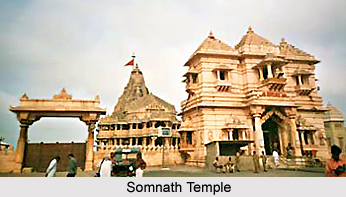 Some of the adhyayas in Agni Purana have been dedicated to the description of sacred pools and places which people in India resort to. The God of Fire in his description has said that a man who has perfect control over the doings of his hands and feet and who has got ample education, practised penances, secured a good name in the world and has mastered his own mind is fit to start on a pilgrimage to the various sacred places.
Some of the adhyayas in Agni Purana have been dedicated to the description of sacred pools and places which people in India resort to. The God of Fire in his description has said that a man who has perfect control over the doings of his hands and feet and who has got ample education, practised penances, secured a good name in the world and has mastered his own mind is fit to start on a pilgrimage to the various sacred places.
It has been said that a pilgrim who has refrained from taking alms, lives on a spare diet, who has put his passions and propensities under a healthy curb and who becomes absolved of all sins attains the merit of performing all sacrifice by resorting to a sacred place or attain the same merit without pilgrimage if he observes a fast for three consecutive days. It has also been said that a man attains the same merit as that of pilgrimage when he performs sacrifice.
Lord Agni has said that Pushkara is the greatest of all sacred places in respect of sanctity and merit. It has been advised that a man should dwell at least three nights within this holy precints. The belief is that Lord Brahma accompanied by all the gods dwell in that holy place. The sages resort to the place with the most willing heart.
Other sacred places which have been mentioned in the chapters of Agni Purana are Jamvumarga and the Tandulikashraya. Kanyashram is a sacred place and a resort thereto equals the merit of visiting a million of sanctuaries. Narmada River is also considered a holy place, the great Arvudahill, the river Charmanvati, the Indus, the temple at Somnath, Parvasha, the Indus River, the Somnath Temple, Pravasha, the union of Saraswati and the sea and also the estuary.
 Lord Agni has also said that some of the holy pilgrimages of the country are Dwarka, Gomati and Pindarak. It is believed that these places have the capacity to grant the desires of all human beings.
Lord Agni has also said that some of the holy pilgrimages of the country are Dwarka, Gomati and Pindarak. It is believed that these places have the capacity to grant the desires of all human beings.
The adhyayas in Agni Purana have sung the greatness of several holy places of the country. The Lord has said that places like Cape Comorin, Binashan, Nagodbhed, Aghardana are considered holy and sacred. It is also believed that when an individual goes to Kurukhetra and lives therein he becomes free of all sins and goes to heaven. Kurukshetra is the abode of Lord Vishnu and a man is able to reach the gods when he goes to Kurukshetra. It is a strong belief that even the particles of dust in Kurukshetra impart salvation to human soul.
Fountains and glaciers give rise to River Ganges and the holy city of Varanasi is the sancto sanctorium of all sacred places and the towns of Avimukta and Anuttama are also considered very holy.
According to the Agni Purana Prayag is considered the crown of all sacred places. Some of the other sacred places of Bharatvarsha are the confluence of rivers Gomti and Ganges.
The city of Rajagriha is a holy city and likewise the villages of Shalagrama and Aghantaka are sacred places, the remaining sanctified pilgrimages being Vatesha, Vamana Tirtha, the temple of Kali, Louhitya, the rivers Karatoa, Shona, the hills known as the Shri Parvata, Kolvagiri, the Sajhyadri, the Malaya hills, the rivers such as Godavari, Tunghabhadra, Kaveri, Barada, Tapi, Payashvini, Reva and the forest of Dandaka.
Finally the God of Fire has ended saying that visiting to pilgrimages not only grants earthly enjoyments to the pilgrims but also ensures salvation after death.












